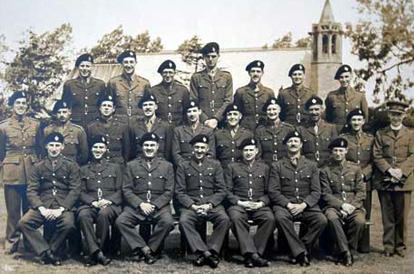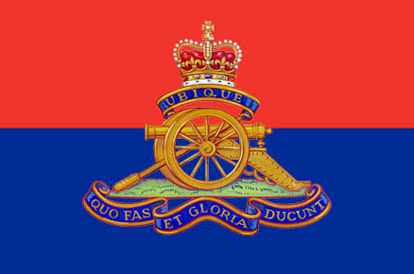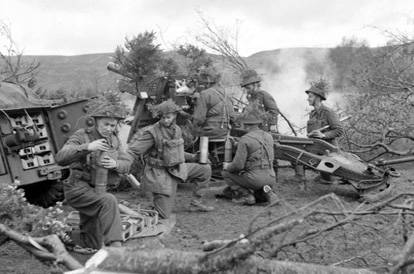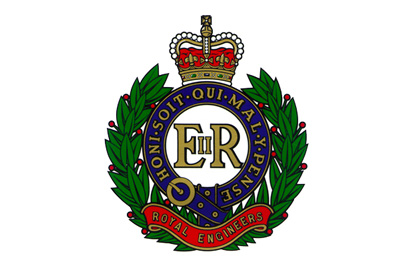The Arms 1930 - 1956
The Arms of the British Army and British Indian Army were the fighting elements of the Army, as opposed to the Services that enabled the Arms to conduct the battle. The Arms are those elements of the British Army whose primary role is to engage in close combat with an enemy.
The Arms of the British Army in this period include:
The Royal Armoured Corps (including the Cavalry);
The Royal Regiment of Artillery;
The Corps of Royal Engineers;
The Royal Corps of Signals;
The Brigade of Guards;
The Infantry of the Line.


Royal Armoured Corps (including the Cavalry)
The Cavalry was one of the oldest elements of the British Army and also the British Indian Army, cementing a long lasting relationship between the soldier and the horse. Horsemanship was a prized skill in the both the British Army and British Indian Army for many years, with this view continuing onwards from the end of the First World War.
Following the introduction of the tank into modern warfare during the First World War, there was increasing debate within the British Army about the role of the tank. Initally, the tanks were operated by soldiers from the Royal Tank Regiment, which was formed for that purpose. Gradually, and against much opposition, the cavalry regiments of both the British Army and British Indian Army were mechanized during the late 1920’s and into the 1930’s. This process was not complete by the outbreak of the Second World War, leaving the United Kingdom desperately short of tanks. As the number of tanks were limited, tactics were poor and in particular tank – infantry cooperation was very weak.
As the Second World War progressed, matters improved steadily, although British industry struggled to deliver an efficient and effective tank in the numbers required until the end of the war. American industrial power greatly assisted the British, with American designed and built tanks dominating British and Indian armoured formations throughout the Second World War.


The Royal Regiment of Artillery
Artillery has always been an important component of the British Army, this view being reinforced by the experiences of the First World War in France and Belgium, as well as Italy, Serbia, Macedonia and the Middle East. The vast majority of artillery came under the control of the Royal Regiment of Artillery, the largest single regiment in the British Army. As it was the largest regiment in the Army, not surprisingly, it produced several of the most recognised senior officers of the British Army during the Second World War.
As a continuance of the legacy of the Indian Mutiny, the only artillery units of the Indian Army were the few Mountain Batteries and Regiments. In the main, these were deployed on the North West Frontier. Therefore, units of the Royal Artillery were deployed to India. Even though the Indian Artillery was expanded significantly during the Second World War, most artillery units in Indian divisions were British right up to the end of the war.
If the British Army was deficient in tanks and armoured tactics, it was probably the leading army in the world in respect of artillery guns and tactics. As an example, the 25 pounder gun was the foremost field artillery piece during the whole war, continuing in use for many years afterwards. British and Indian divisions were well provided for in terms of artillery and they were highly mobile.
Please note: Firepower, the museum of the Royal Regiment of Artillery at Woolwich, has closed, and its collections are in storage. It is moving to the new Salisbury Plain Heritage Centre, and will reopen in due course.
A useful website for find out about the Royal Artillery in the Second World War can be found at: https://ra39-45.co.uk/

Corps of Royal Engineers
In a similiar manner to artillery, the British Army valued engineering skills in the battlefield. The Corps of Royal Engineers has its origins in the Ordnance Board of the Sixteenth Century, when military engineers were employed to work in Royal arsenals and fortifications. The role of engineers within the British Army and British Indian Army became increasingly important and complex. First and foremost, the engineers were soldiers, and were trained to fight. Famously, Lieutenant John CHARD, who commanded the garrison at Rourke’s Drift in South Africa, was a serving Royal Engineer officer.
During the Second World War, the Royal Engineers played a vital role in enabling both attack and defence in all theatres of operations. Each division had a significant engineer element, plus there were additional units under corps and army command. The roles engineers fulfilled during the war was vast, including as an illustration: bridging, building roads and tracks, construction of the Mulberry harbours at Normandy, airfield construction, bomb disposal, armoured engineer roles, mine laying and lifting, building fortifications, water supply, demolition, and many more.
The Royal Engineers provided the military engineering requirements for the British Army. In the British Indian Army the same roles were fulfilled by three corps of engineers:
King George V’s Own Bengal Sappers and Miners;
Queen Victoria’s Own Madras Sappers and Miners;
Royal Bombay Sappers and Miners.
For further information on the Royal Engineers, please see:
www.re-museum.co.uk and www.army.mod.uk/royalengineers
The Royal Corps of Signals
Communication with accuracy, brevity and clarity between units and formations in any battlefield is vital to ensure a successful outcome. Signalling in the British Army was developed by the Royal Engineers, but during the First World War, technology developed rapidly. In particular, the increasing use of wireless communication needed increased specialization within the British Army.
The Corps of Signals was formed by Royal Warrant on 28 June 1920, with the title of Royal Corps of Signals being conferred by His Majesty the King six weeks later.
At the beginning of the Second World War, the use of radio in operational and tactical situations was limited. Most units relied on ‘runners’, soldiers who had to deliver messages from one commander to another, and despatch riders on motorcycles. In France in May 1940, the telephone system was a major method of communication, with all the risks of security breaches and cuts to lines.
By the end of the Second World War, the Royal Corps of Signals had expanded significantly. Most units down to company level used radio to communicate by 1944, and the range of radio equipment had grown. The changes in just four years of war were tremendous, and a testament to Allied science and technology.
For more information see:
www.royalsignalsmuseum.co.uk
The Brigade of Guards
The Brigade of Guards refers to the five regiments of Foot Guards that existed in 1930, and throughout the Second World War. For further information see:
» Regiments of the British Army
Infantry of the Line
The Infantry of the Line refers to the sixty-four infantry regiments of the British Army in existence at the commencement of the Second World War. During the war, the Parachute Regiment was formed as part of the Army Air Corps, as was the Glider Pilot Regiment. For further information see:
» Regiments of the British Army

